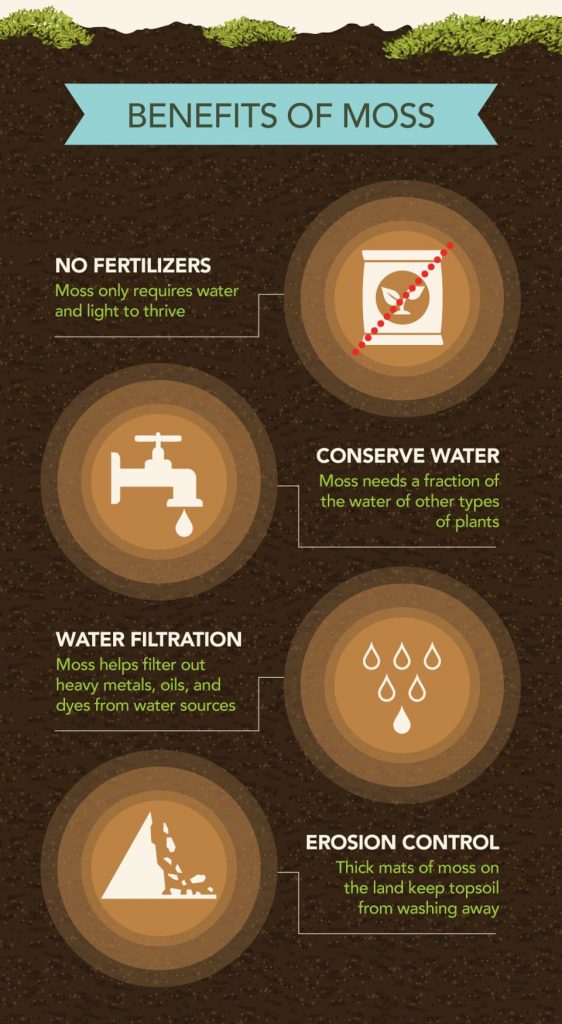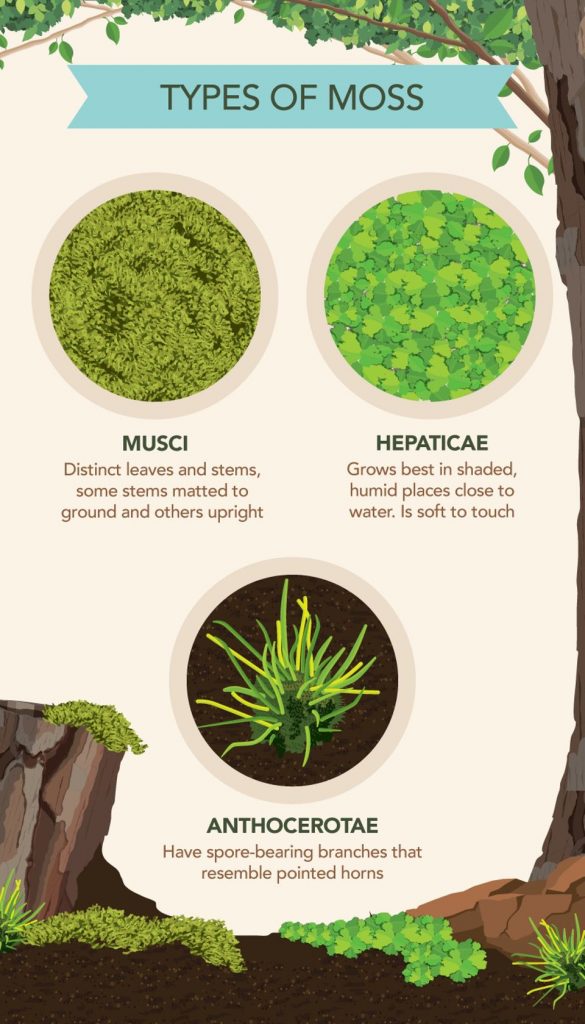When most of us hear the word moss, we think about a speckle of green dotting a fallen tree, hidden deep in the forest. However, moss is all around us – even if we live in an urban environment. Moss is one of the most resilient and interesting types of plants out there with endless possibilities for gardening projects, artwork, and more.

Moss is a bryophyte, which is a family of plants that is broken up into three different types of plants that we commonly refer to as “mosses.”
Musci are what most people typically refer to as mosses. The distinguishing factor of a musci moss is the clear differentiation between their leaves and stems. Some varieties have stems that are upright, while others have stems that are matted down on the surface of the ground. The most common musci mosses are Sphagnum and Hypnaceae, and they are wonderful for use as soil amendments or for stand-alone DIY projects.
Hepaticae, also known as liverworts, are identifiable by how soft they are to the touch. They do well in shady areas near water, and prefer high humidity. If you live in a low humidity or drier area, you’ll need to give extra care to your Hepaticae plants if you want them to do well.
Anthocerotae, also known as hornworts, are the third type of bryophyte. They’re readily distinguishable by their pointed branches that bear all of their spores. Like Hepaticae, they prefer damp, high-humidity environments, but they also like a reasonable amount of sun. Anthocerotae are also the rarest type of moss, with the fewest species of the three.

If there is a golden rule of moss care, it would be this: Mimic the environment that moss thrives in.
For most mosses, this means a damp, well-lit area with high humidity. But before we get into the finer details of moss care, here are some tools you’ll need to care for your moss gardens:
The Women's Outdoor News, aka The WON, features news, reviews and stories about women who are shooting, hunting, fishing and actively engaging in outdoor adventure. This publication is for women, by women. View all posts by The WON